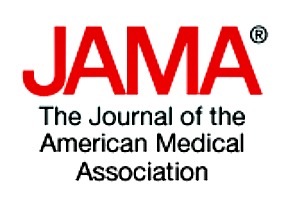 When medical marijuana was legalized in Massachusetts 5 years ago, Emma Jones, MD, was one of the first physicians on the pediatric palliative care team at the Dana-Farber Cancer Institute and Boston Children’s Hospital to register with the state so that she could provide qualifying young patients access to cannabis in the hopes of easing symptoms such as nausea and pain.
When medical marijuana was legalized in Massachusetts 5 years ago, Emma Jones, MD, was one of the first physicians on the pediatric palliative care team at the Dana-Farber Cancer Institute and Boston Children’s Hospital to register with the state so that she could provide qualifying young patients access to cannabis in the hopes of easing symptoms such as nausea and pain.
So when pediatric patients with advanced cancer or other life-limiting illnesses come to Jones—and they are unable to find symptomatic relief through other therapies or medications—Jones can “certify” the patients for a medical marijuana card. This certification allows them (or a caregiver) access to a dispensary.
Despite being one of the go-to physicians with experience evaluating such clinical cases, Jones does not consider herself an authority on medical marijuana, which is now legal in 29 states, the District of Columbia, Puerto Rico, and Guam.
“One of the things that’s remarkable about this whole phenomenon is how little it takes to be an expert in the field,” Jones said. She noted that the online training course she took was only a few hours long.
Furthermore, medical marijuana has not been approved by the US Food and Drug Administration, and is not currently regulated by the agency, and there are little to no high-quality randomized clinical trials on efficacy, dosage, adverse effects, and drug interactions of marijuana (or its chemical components), particularly in pediatric patients, Jones noted. “We know what we know by asking patients what works; but that is not expertise or experience built on any kind of evidence-based medicine,” she said.
So what do most clinicians know about medical marijuana—and are they willing to recommend it to children with cancer? To find out, researchers, led by Prasanna Ananth, MD, MPH, a pediatric oncologist and assistant professor of pediatrics at the Yale School of Medicine, surveyed pediatric oncology clinicians in 3 states across the country.
The research, published in Pediatrics, showed that while pediatric clinicians are overwhelmingly supportive of medical marijuana use for severe conditions, they have significant gaps in knowledge concerning how it may be used and what their state’s regulations are.
“I was in Massachusetts when medical marijuana was legalized, and there was a huge surge of patients and families asking about it,” said Ananth, who was then at Dana-Farber. “I wanted to know, how is this impacting practice? How is this affecting patients and families? Because the laws are being made and the science is lagging behind.”
So in 2015, Ananth teamed up with senior author, Joanne Wolfe, MD, MPH, chief of Pediatric Palliative Care at Dana-Farber and director of Pediatric Palliative Care at Boston Children’s Hospital, to launch an investigation. They created an electronic survey and disseminated it to clinicians at 3 large National Cancer Institute–designated centers: Dana-Farber, Lurie Children’s Hospital of Chicago, and Seattle Children’s Hospital.
Of the 288 clinicians who completed the survey (a 48% response rate), the majority were physicians, nurses, nurse practitioners, or physician assistants, and 30% said that patients or their families had asked for medical marijuana at least once in the past month. Seventy-nine percent of the inquiries were to relieve nausea, 52% were for anorexia (appetite promotion), 26% were for pain, and 24% were for depression or anxiety. Of those inquiries, 14% of clinicians facilitated access to medical marijuana 1 or more times.
Overall, 92% of respondents were willing to recommend marijuana to pediatric patients with cancer, especially near end of life. Clinicians who were eligible to certify patients for access to marijuana were less likely to recommend it than those who were not eligible to certify (85% vs 92%).
Wolfe theorized that clinicians who are eligible to certify patients may have more of an understanding of the medical marijuana program in their state, its nuances, and the clinical uncertainties, and therefore may be more cautious.
Stefan Friedrichsdorf, MD, medical director of the Department of Pain Medicine, Palliative Care and Integrative Medicine at Children’s Minnesota in Minneapolis, who was not involved in the study, chose not to become a certifying physician, in part because of the unknowns.
“I’m absolutely certain that there are very useful and good components in this compound, but we have to find out which ones and the safety profile,” he said. “And with the current system, I have no control. I would certify it, and then my patients would go to a [dispensary] that has nothing to do with me, yet decides which brand to give, which strain to give, whether to go up or go down in dosage.”
Further complicating matters, despite legalization in many states, marijuana remains classified as a schedule I controlled substance (considered to have a high potential for abuse and to be without medical value) by the Drug Enforcement Administration, making it illegal under federal law. This may deter some clinicians from becoming registered to certify or confuse others about their legal liability.
In fact, the survey revealed that many clinicians were unclear about federal and state regulations concerning medical marijuana. While 86% knew that their state had legalized marijuana and 76% knew that medical marijuana is considered a controlled substance, only 59% knew that it is against federal laws to certify patients and a mere 5% could identify state-specific regulations surrounding access, possession, and cultivation.
Ananth was not particularly surprised by these figures. “Unless you’ve specifically sought that information out, you might not have that baseline knowledge,” she said.
According to 46% of clinicians surveyed, the greatest barrier to recommending medical marijuana was a lack of information on standards for formulation, potency, and dosing.
There are no mandatory medical school courses in the clinical uses of marijuana, and due to its schedule I classification, researchers are limited in their ability to study it. “I would love for marijuana to be rescheduled, so we could do good science and figure out what it’s really good for and how to really use it,” said Jones, who was not involved in the Pediatrics survey.
The American Academy of Pediatrics (AAP) is in favor of this research, stating that it “strongly supports research and development of pharmaceutical cannabinoids” and “recommends changing marijuana from a Drug Enforcement Administration schedule I to a schedule II drug to facilitate this research.” The AAP also recognizes that medical marijuana may currently be an option for children with “life-limiting or severely debilitating conditions and for whom current therapies are inadequate.”
Without research, however, clinicians are left to forge ahead on their own. “Anecdotally, once we certify patients, some of them find marijuana to be extremely helpful and others don’t. It’s like a lot of symptom management in very advanced disease, which is unfortunately trial and error,” noted Wolfe, who is a certifying physician.
Both Jones and Wolfe acknowledge that there are risks for children who use medical marijuana, including possible adverse effects on cognitive development. But in cases in which children are facing terminal disease, the potential for marijuana to alleviate intractable suffering and improve quality of life can outweigh the risks, they noted.
Despite the low response rate and potential response bias, the study in Pediatrics reveals that requests for medical marijuana are common in pediatric oncology practices, and clinicians need more information to adequately field these inquiries, Ananth said.
“What states and institutions might consider is implementing mandatory training for [clinicians] around the ways in which marijuana is metabolized, how marijuana toxicity presents, and information that’s more formalized,” she added.
“I think the approach has long been to either decline to comment, or just say, ‘I’m not sure I can recommend that.’ That might have been an okay response when medical marijuana wasn’t legal, but now that it is legal and patients are seeking very valid channels to access it, we have to, as physicians, come up with a response that feels safe.”



